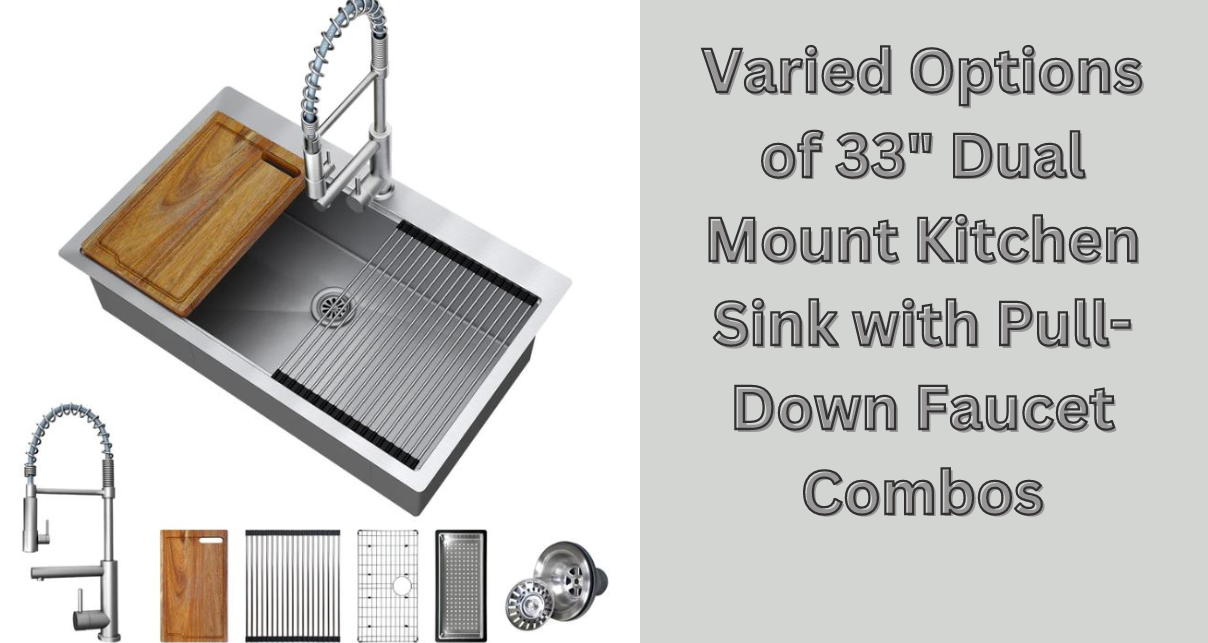The Expert Guide to Keeping Your Kitchen Sink Clean and Fresh
Keeping your kitchen sink clean is an essential part of maintaining a healthy home. It is also a critical factor in the lifespan of your kitchen sink. By regularly cleaning your kitchen sink, you can prevent the buildup of bacteria, stains, and odors, and ensure it lasts for a long time. In this article, we will discuss the things you need to clean your kitchen sink and provide step-by-step instructions on how to keep it looking clean and fresh.
Things Needed in Cleaning a Kitchen Sink:
Supplies:You will need a few basic supplies to clean your kitchen sink, such as rubber gloves, a microfiber cloth, a sponge, and baking soda.
Microfiber cloth:
A microfiber cloth is essential for cleaning your kitchen sink. It is soft and gentle, making it perfect for removing stains and grime without scratching your sink.
Sponge:
A sponge is a great tool for scrubbing down your sink. It is ideal for removing tough stains and dirt that have accumulated in the corners and around the drain.
Baking soda:
Baking soda is an all-purpose cleaner that can be used to clean your sink, remove stains, and neutralize odors.
Steps/Tips on How to Clean the Kitchen Sink:
Clean sinks regularly: Regular cleaning is the key to maintaining a clean kitchen sink. Clean your sink at least once a week to prevent the buildup of bacteria and stains.
Use protective measures:
Always wear rubber gloves to protect your hands when cleaning your kitchen sink. Gloves also prevent the spread of germs and bacteria.
Check for leaks:
Before you start cleaning, check your sink for any leaks. If you notice any leaks, fix them before you begin cleaning.
Scrub down with soap and water:
Start by scrubbing down your sink with warm soapy water. Use a sponge to scrub away any dirt or grime on the surface of the sink.
Create a baking soda paste:
To remove tough stains, create a baking soda paste by mixing baking soda and water. Apply the paste to the stains and let it sit for a few minutes.
Use a microfiber cloth:
Use a microfiber cloth to wipe away the baking soda paste and any remaining dirt or grime on the sink.
Rinse and dry:
Rinse the sink thoroughly with warm water and dry it with a clean, dry cloth.
Frequently Asked Questions:
What Is the Purpose of a Double Kitchen Sink?
A double kitchen sink is simply a sink that has two bowls instead of one. This can be helpful if you have a lot of dishes to wash. One side can used for washing dishes while the other can be used for rinsing them. It’s also sometimes a great convenience in food preparation.
What Is the Difference Between a Drop-In Sink and an Undermount Sink?
A drop-in sink is a type of sink that sits on top of the counter. An under-mount sink is a type of sink that is installed beneath it. Undermount sinks are generally considered to be more aesthetically pleasing because they have a cleaner look. They’re also easier to keep clean because there’s no lip around the edge of the sink for dirt and debris to collect. However, they can be more difficult to install.
Can I Install a Sink Myself?
In most cases, we would not recommend that you try to install a sink yourself. Sinks are connected to your home’s water supply, so if there are any leaks, you could end up with a lot of water damage. Someone who is not familiar with plumbing could end up causing more problems than they solve. If you’re considering installing a sink yourself, we recommend that you consult with a professional plumber first to see if it’s a good idea in your specific case.
How Can I Prevent My Sink From Clogging?
There are a few things you can do to prevent your sink from clogging. The biggest is to make sure you’re using a strainer in the drain to catch hair and food particles. Additionally, avoid pouring grease down the drain, as it can solidify and cause a clog. You should also clean your drains regularly with a mixture of vinegar and water.
How Can I Prevent My Sink From Leaking?
If you have a leaky faucet, the first thing you should do is check the washers and O-rings to see if they need to be replaced. If that doesn’t solve the problem, you may need to replace the entire faucet. To prevent leaks at the base of the sink, make sure the P-trap is tightened and there are no cracks or gaps in the sealant. Tecasa ensures that keeping a kitchen sink clean and fresh is essential to maintain a healthy and hygienic home. By having the necessary cleaning supplies, wearing protective gloves, and following the proper cleaning techniques and steps, anyone can easily clean their sink and keep it looking new. It is important to remember that regular maintenance and preventive measures are crucial in extending the lifespan of the sink and preventing any future issues. With these tips and suggestions, anyone can keep their kitchen sink looking and functioning like new for years to come. With a little care and effort, anyone can achieve a clean and sparkling sink that is both pleasing to the eye and free from harmful bacteria.




